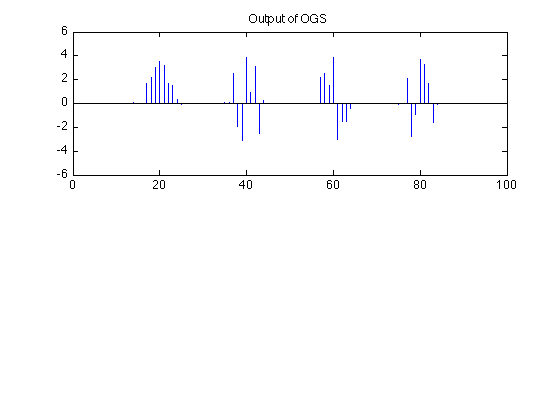Example 1: 1D group-sparse signal denoising using overlapping group shrinkage (OGS)
Illustrate overlapping group shrinkage (OGS) for denoising a signal with group sparsity property. OGS takes into account the group sparsity property of the signal.
Po-Yu Chen and Ivan Selesnick Polytechnic Institute of New York University New York, USA March 2012
Contents
Start
clear % close all randn('state', 0); % Initialize state so as to exactly reproduce the example printme = @(txt) print('-dpdf', sprintf('figures/Example1_%s', txt));
Create signal
Create signal with group sparsity property.
N = 100; % N : length of signal x = zeros(N, 1); % x : signal (with no noise) x(20+(-3:3)) = [2 3 4 5 4 3 2]; x(40+(-3:3)) = [3 -2 -4 5 2 4 -3]; x(60+(-3:3)) = [3 4 2 5 -4 -2 -3]; x(80+(-3:3)) = [3 -4 -2 5 4 2 -3]; figure(1) clf subplot(2, 1, 1) stem(x, 'marker', 'none') title('A) Signal') M = 6; ylim1 = [-M M]; ylim(ylim1)
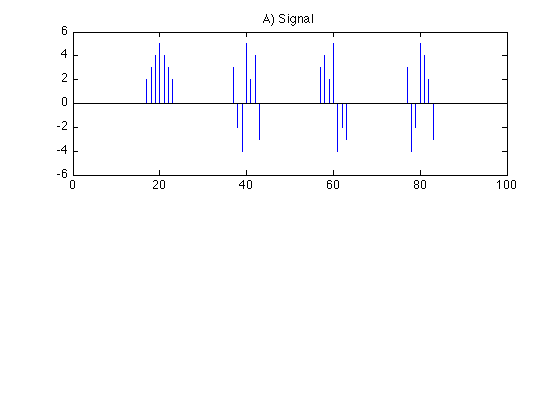
Create noisy signal
The red line shows A*sigma. Most of the noise is within this margin. This can be considered the 'noise envelope'.
sigma = 0.5; % sigma : standard deviation of noise y = x + sigma .* randn(N, 1); % y : signal + noise A = 3; % A : multiplier to define noise envelope figure(1) subplot(2, 1, 2) stem(y, 'marker', 'none') line([1 N], A*sigma*[1 1], 'linestyle', '--') line([1 N], -A*sigma*[1 1], 'linestyle', '--') title('B) Signal + noise') ylim(ylim1) printme('data')
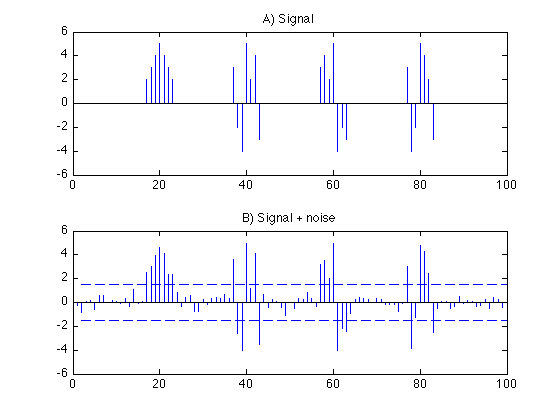
Soft-thresholding
Denoise the signal using the soft thresholding rule. Setting the threshold to A*sigma removes near all the noise.
T = A * sigma; % T : threshold x1 = soft(y, T); % apply soft thresholding rmse = sqrt(mean((x-x1).^2)); % rmse : root mean square error figure(2) clf subplot(2, 1, 1) stem(x1, 'marker', 'none') title('C) Soft thresholding') ylim(ylim1) txt = sprintf('RMSE = %.3f', rmse); axnote(txt)
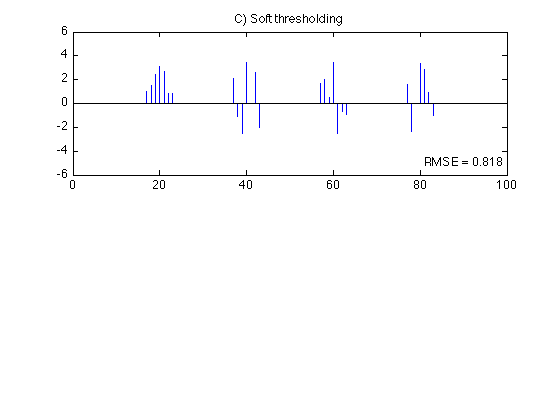
Note that soft thresholding applied to white standard normal (zero-mean, unit variance) noise leads to an output std of about 0.02.
yy = randn(1, 10000000);
xx = soft(yy, 3);
std(xx(:)) % gives 0.02
ans =
0.0203
So, for OGS, we will set lambda to a value that leads to the same output std of 0.02 when OGS is applied to standard normal white noise.
Overlapping group shrinkage (OGS)
Denoise the signal using the overlapping group shrinkage (OGS) algorithm. This is an iterative algorithm.
Nit = 25; % Nit : number of iterations K = 5; % K : group size parameter lambda = 0.68 * sigma; % lambda: regularization parameter for OGS [x2, cost] = ogshrink(y, K, lambda, Nit); % Run the OGS algorithm rmse = sqrt(mean((x-x2).^2)); % rmse : root mean square error figure(2) subplot(2, 1, 2) stem(x2, 'marker', 'none') txt = sprintf('D) OGS algorithm. %d iterations. Group size K = %d', Nit, K); title(txt) ylim(ylim1) txt = sprintf('RMSE = %.3f', rmse); axnote(txt) printme('denoised')
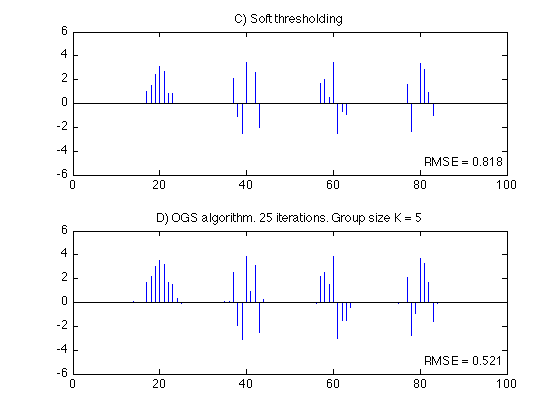
Display cost function history of OGS algorithm
figure(3) clf plot(1:Nit, cost, '.-') % , 'markersize', 16) title('Cost function history') xlabel('Iteration') printme('cost')

Comparison: Soft thresholding and OGS
err1 = abs(x - x1); err2 = abs(x - x2); figure(1) clf subplot(2,1,1) plot(1:N, err1, 'x', 1:N, err2, 'o') legend('soft', 'OGS') title('E) Error: soft-threshold (x), OGS (o)'); printme('compare')
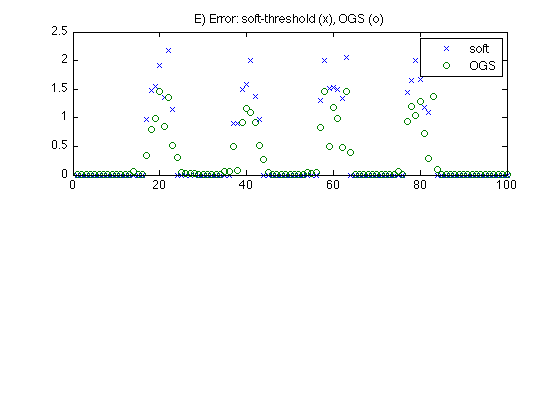
Convergence of OGS
Here is the OGS algorithm with all intermediate solutions stored in a matrix A, so that the convergence of the solution can be subsequently visualized.
% function [a, cost] = ogshrink(y, K, lam, Nit) % y : 1-D noisy signal (vector) % K : size of group % lam : regularization parameter % Nit : number of iterations lam = lambda; Nit = 100; N = length(y); A = zeros(N, Nit); a = y(:); % initialize h = ones(1, K); % for convolution cost = zeros(1, Nit); for it = 1:Nit r = sqrt(conv(abs(a).^2, h)); cost(it) = 0.5*sum(abs(y - a).^2) + lam * sum(r); v = 1 + lam*conv(1./r, h); v = v(K:end+1-K); a = y./v; A(:, it) = a; end figure(1) clf semilogy(abs(A'), 'black') title('Convergence of OGS') ylim([1e-8 10]); xlabel('Iteration') ylabel('|a(n)|') printme('convergence')
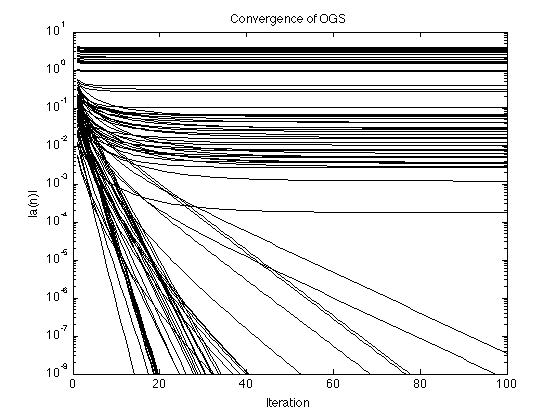
figure(2) clf subplot(2, 1, 1) stem(a, 'marker', 'none') ylim(ylim1) title('Output of OGS')
